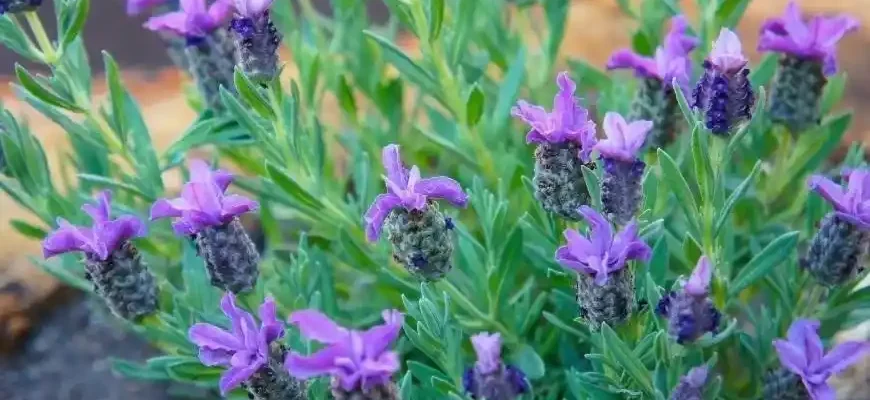Lavender is one of those timeless plants that appeals to gardeners, health enthusiasts, and home decor lovers alike. Known for its aromatic fragrance, lovely purple flowers, and numerous uses, this hardy herb can be grown in a variety of environments. As someone who has been gardening for decades, I can tell you—growing lavender isn’t as intimidating as it might seem, but it does require some attention to detail. Let me walk you through everything you need to know, from soil preparation to troubleshooting common issues.
1. The Basics: What is Lavender?
Lavender (Lavandula angustifolia) is a woody, perennial herb native to the Mediterranean region. It’s prized for its soothing scent, which has been shown to reduce stress and anxiety. Lavender has culinary, medicinal, and aesthetic benefits. Whether you’re using it to make herbal teas, essential oils, or as a fragrant addition to your garden, lavender is a multi-purpose plant that has stood the test of time.
2. Choosing the Right Variety
Before we dive into planting, it’s important to understand that there are several varieties of lavender. The most common is English lavender, which is perfect for colder climates, but there are also French lavender and Spanish lavender varieties, which thrive in warmer regions.
- English Lavender: Known for its classic purple blooms and strong fragrance. It’s the best choice for colder climates, as it can withstand frost.
- French Lavender: Slightly more heat-tolerant, this variety has more distinct, frilled flowers. It doesn’t cope with frost very well, so it’s ideal for warmer areas.
- Spanish Lavender: Features tufted flowers that resemble rabbit ears. It thrives in hot, dry conditions and does best with plenty of sun.
If you’re just getting started, I recommend English lavender as it’s the most forgiving for beginners and has a strong fragrance.
3. Where to Plant Lavender
Lavender needs a sunny spot—preferably at least 6 hours of direct sunlight a day. You’ll also need well-drained soil. Lavender roots can rot in soggy conditions, so proper drainage is essential. If your soil tends to hold water, you can mix in sand or gravel to improve drainage.
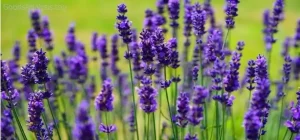
- Soil pH: Lavender prefers slightly alkaline soil, ideally between 6.7 and 7.3 pH. If you’re unsure about your soil’s pH, a simple soil test can help guide your next steps.
- Space: Lavender plants can grow wide and tall (up to 3 feet), so be sure to space them at least 18 to 24 inches apart. This allows air circulation, which helps prevent fungal diseases like mildew.
4. Planting Lavender: The Basics
- Prepare the soil: Dig a hole about 18 inches wide and deep. If you’re planting multiple lavender plants, space them at least 18 inches apart to allow for their spread.
- Add sand or gravel: If you have heavy, clay soil, mix in some coarse sand or small gravel to improve drainage.
- Planting time: The best time to plant lavender is in the spring or early fall. Avoid planting during the hot summer months, as the heat can stress young plants.
- Planting depth: Place your lavender plant in the hole, ensuring that the root ball is level with the surrounding soil. Gently backfill the hole with soil, firming it around the base to eliminate air pockets.
5. Watering and Maintenance
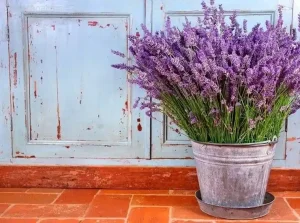
Lavender is drought-tolerant once established, but it still needs care during its initial growth phase. The general rule of thumb is to water thoroughly but infrequently. Here’s how to strike the right balance:
- Watering: Water lavender once a week during the growing season, but make sure the soil has dried out between waterings. Lavender hates wet feet! Over-watering is a common mistake, so it’s better to let the soil dry out completely than to risk root rot.
- Mulching: A light mulch of gravel or pebbles around the base of the plant can help retain moisture without causing the soil to stay too damp. Avoid using organic mulch, as it retains too much moisture.
- Fertilization: Lavender is not a heavy feeder, so don’t go overboard with fertilizer. A light dose of organic compost in early spring is sufficient. Avoid high-nitrogen fertilizers, as they can encourage too much leafy growth at the expense of flowers.
6. Pruning and Harvesting
Pruning lavender is crucial to keep the plant healthy and encourage vigorous growth. Here’s how to do it:
- Pruning: After the flowers have finished blooming (usually in late summer), cut back the stems by about a third to encourage new growth. Avoid cutting into the old, woody growth, as this can hinder the plant’s ability to regenerate.
- Harvesting: You can harvest lavender for its flowers or essential oils. To harvest, cut the stems just before they are fully open (usually in mid to late summer). You can then dry the flowers by hanging them upside down in a cool, dry place.
7. Common Issues and How to Solve Them
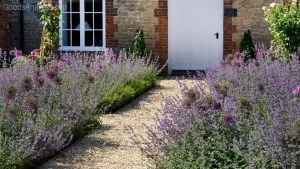
No plant is perfect, and lavender is no exception. Here are a few common problems gardeners face with lavender, and how to solve them:
- Root rot: If your lavender’s leaves start turning yellow or brown and the plant begins to wilt, it may be suffering from root rot caused by over-watering. The solution is to improve drainage and allow the soil to dry out more between waterings.
- Fungal diseases: Lavender can be susceptible to fungal diseases like powdery mildew. If this happens, reduce humidity around the plant, prune away infected areas, and use a mild fungicide if necessary.
- Winter stress: In colder regions, lavender may struggle in the winter. If you live in a colder climate, it’s a good idea to cover your lavender with a layer of mulch in late fall to protect it from frost.
8. Lavender’s Many Uses
Lavender isn’t just for the garden. It has a wide range of uses, from culinary to medicinal. Here are a few ideas:
- Aromatherapy: Lavender essential oil is commonly used to relieve stress, promote sleep, and alleviate headaches.
- Culinary: Lavender can be used to infuse oils, make teas, or flavor baked goods. However, use it sparingly—its flavor is strong!
- Home decor: Dried lavender is often used in bouquets, wreaths, and potpourri for a rustic, calming touch.
9. Lavender Around the World: Opinions from Gardeners and Enthusiasts
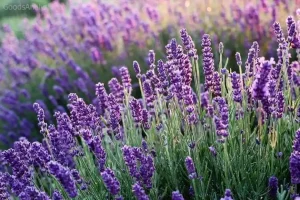
I reached out to a few people from different corners of the world to gather their thoughts on lavender. Here’s what they had to say:
- Maria (Spain, 55): “I’ve been growing lavender in my garden for years. The Mediterranean climate is perfect for it, and I love using it in my homemade soaps and oils. The scent is calming, and I swear it helps with my migraines.”
- David (USA, 68): “I’ve tried growing lavender in my backyard in Oregon, but it’s a bit tricky with the rain. I’ve had better luck in pots where I can control the soil and drainage more. I just love the way it looks when it blooms.”
- Chen (China, 42): “I’ve never grown lavender, but I use lavender essential oils every night. It really helps me sleep. I do think it’s harder to grow in humid climates like ours. Maybe one day I’ll give it a try.”
- Fiona (UK, 59): “Lavender is a staple in my garden. It thrives even in our unpredictable weather. I’ve even made lavender jam once! It’s surprising how many uses you can find for it.”
- Lena (South Africa, 35): “Lavender is tricky in the high heat, but I’ve found that the French variety does better in my area. I use it for making candles, and it’s a real hit at local markets.”
Conclusion
Lavender is a resilient, beautiful herb that brings a host of benefits. Whether you’re interested in the health benefits, the fragrance, or just the aesthetic appeal, growing lavender can be incredibly rewarding. Like any plant, it does require some care and attention, but the results are well worth it. With a little patience and the right conditions, you’ll be rewarded with a lush, fragrant garden that will provide joy and relaxation for years to come.
Happy gardening—and remember, when in doubt, give your lavender a little extra sun and a good draining spot. It’s a plant that thrives when you respect its space.

